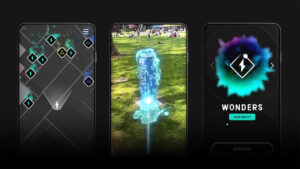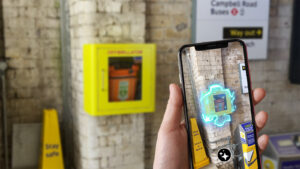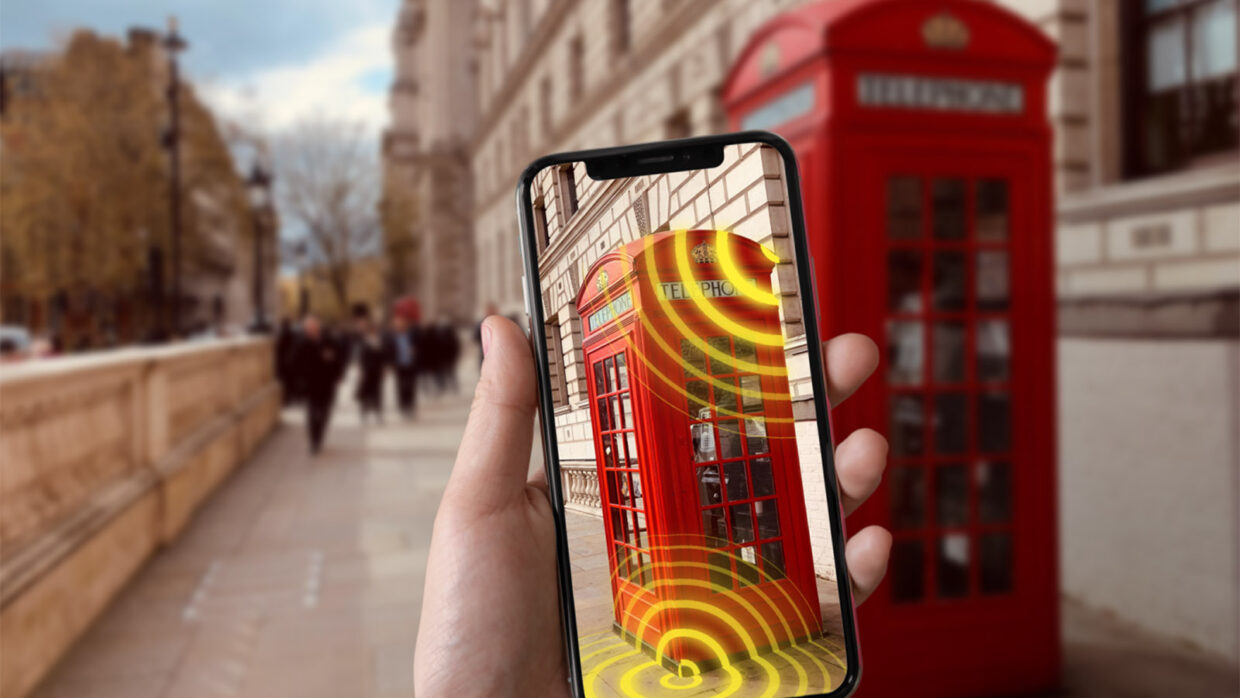In partnership with PRELOADED, the Science Museum Group has launched the Wonderlab AR app. Available on iOS and Android in the United Kingdom, the app is a location-based play experience that uses augmented reality and geospatial technologies to inject scientific phenomena into real life. Specifically designed for a younger audience, the app encourages kids and families to explore the world through eyes-up play.
How it works

On Wonderlab, UK users can scan objects in their environments to call up visuals and information about the particular invention. Image: PRELOADED
Built using Niantic’s Lightship ARDK system — a toolkit with AR feature sets — Wonderlab saw PRELOADED working with the Science Museum to bring geodata into the app using a combination of OpenSeetMap and Mapbox data. Millions of data points, from lamp posts to post boxes to bike racks were pulled into the app to scale the AR experience and to serve as activation points for real-time discovery.
App users in the UK can approach and scan objects in the environment using their phone camera. After identifying the object, the app shares information about the history of the invention and how the current invention came to be. For example, scanning a charging station reveals the history of electric vehicles. The app allows users to keep track of the discoveries they’ve made in different categories like “Space” and “Sound,” with 338 discoveries that users can make.
Why it matters

The app grows out of the Science Museum’s existing Wonderlab program, which spans onsite activations and a digital platform. Image: PRELOADED
The app leverages real-time, geographic specific visualizations and gamification that make science relatable, contextual, and highly interactive. Instead of just “enhancing storytelling,” it tries to create opportunities for writing those stories. According to the press release, science education has been trying to “escape the trappings of physical buildings or institutions,” and the Wonderlab AR app works to demonstrate that in context.
The goal of the app was to create clear and understandable connections between the real-world and scientific phenomena. For example, the construction of a bridge might become an opportunity to consider the engineering of the structure, asking what forces keep a bridge upright and stable.
For the Science Museum, the launch of this app appeals directly to its mission of inspiring “the next generation of scientists, inventors and engineers” — same with its 2020 podcast, A Brief History of Stuff. The app also grows out of the museum’s existing Wonderlab program, which spans onsite interactive galleries and a digital platform, Wonderlab+ which contains a number of virtual activities, quizzes, and games for children and adults to get hands-on with science.



